While varying significantly in location, language, and culture, five places around the world have discovered the secret to a long life. Dubbed the Blue Zones, these incredible communities have a life expectancy measurably longer in comparison to the rest of the world. While it’s hard to qualify, people living in Blue Zones often live to be 100 or older. The global life expectancy is just over 73 years old.
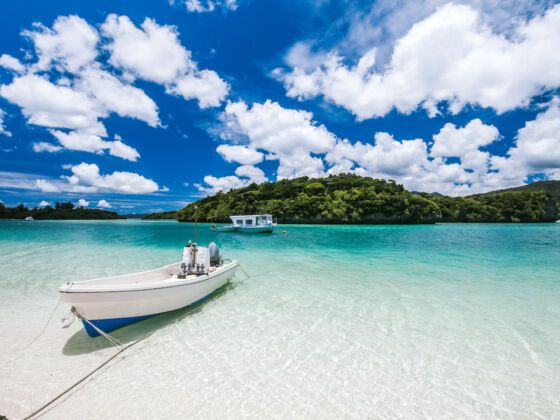
Your Guide to the World's Blue Zones, Where People Live to Be Over 100
These healthy enclaves within California, Costa Rica, Greece, Italy, and Japan, attribute the long lives of their local populations to nutritious diets, routine exercise, and strong social ties within their respective communities.
National Geographic fellow and best-selling author Dan Buettner initially identified the Blue Zones, building upon demographic research on centenarians compiled by Gianni Pes and Michel Poulain for the Journal of Experimental Gerontology.
While notable for their thriving wellness scenes and happy, active locals, Blue Zones are also stunningly beautiful destinations. With vibrantly colored beaches, diverse styles of cuisine, complex histories, rich cultures, and gorgeous mountain vistas, these places offer an impressive wealth of reasons to visit. Here’s your guide to the five Blue Zones.
Sardinia, Italy

Photo: Balate Dorin/Shutterstock
Sitting south of the Italian mainland, Sardinia is not only visually breathtaking but also has one of the healthiest communities in the world.
The social life for locals on the island is vibrant and, like all places mentioned on this list, there’s an emphasis on religious and familial bonds. Elders commonly live with younger kin and dine and drink together as a unit. The population is also highly active, partaking in mild exercise through gardening or exploring the wealth of fantastic scenery within the comfortable Sardinian climate.
Getting to Sardinia is easiest by flight, with airports in Alghero, Olbia, and the island’s largest city of Cagliari. Ferries are another option and many can transport vehicles. Ferry routes depart from the Italian ports of Palermo, Genoa, Naples, and the Roman suburb of Civitavecchia and further away hubs like Marseille and Barcelona.
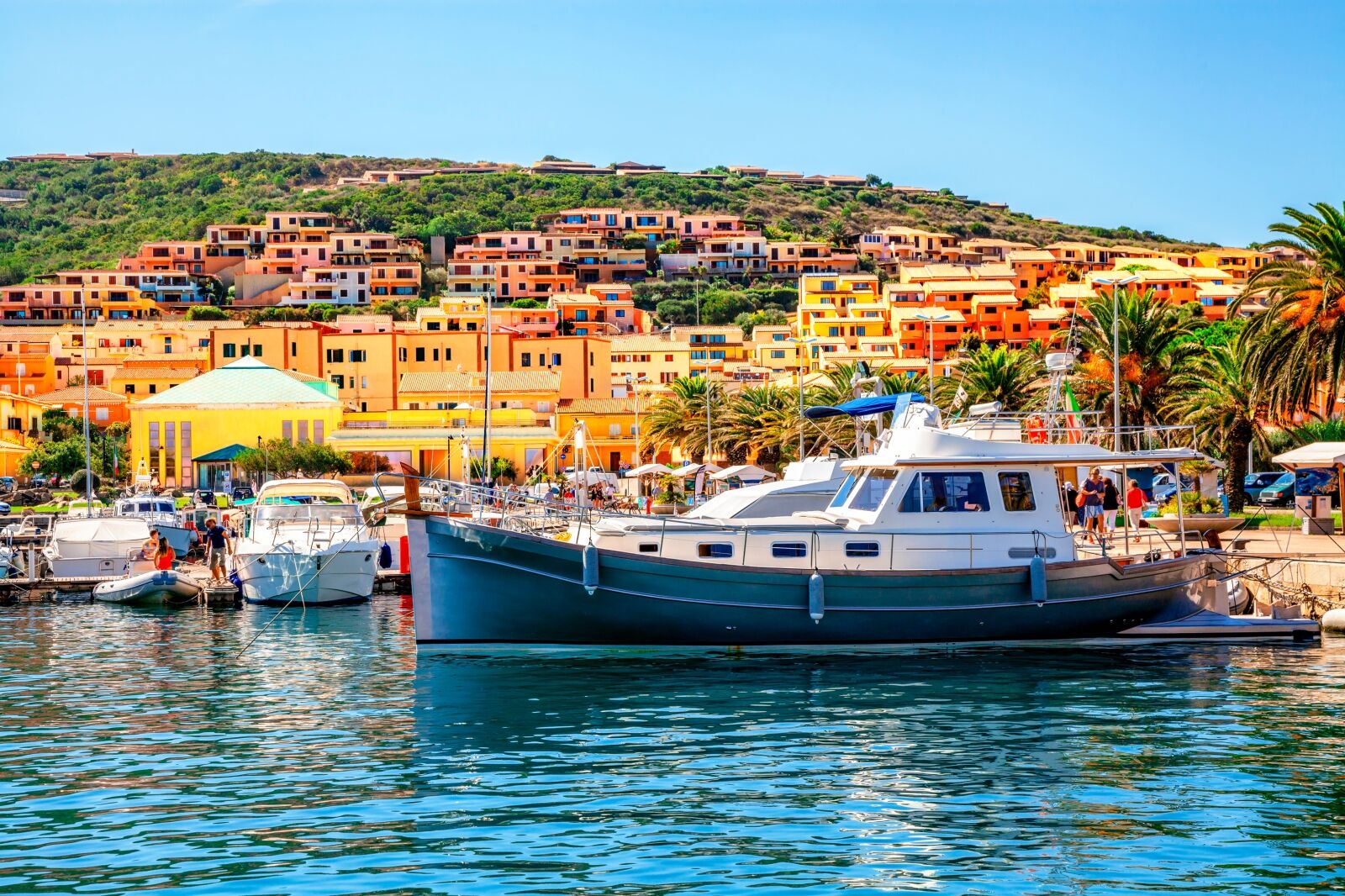
Photo: Vladimir Sazonov/Shutterstock
Sardinia has no shortage of pretty coastal towns. When visiting the northeastern town of Palau, book a room at the upscale Capo D’Orso. The hotel is close to several nearby beaches and seaside dining options like its onsite restaurant Île Flottante, which serves delicious Italian cuisine with views over the ocean. When in Palau, take a boat tour of the nearby Maddelena Archipelago. It stops at secluded islands and visits the famous pink-sand beach of Spiaggia Rosa.
On the island’s eastern shore, the town of Santa Maria Navarrese offers proximity to a more lush and mountainous side of Sardinia. For accommodation, consider the elegant Nascar Hotel. While there, explore the nearby Gulf of Orosei and Gennargentu National Park, which has some of the island’s most beautiful and secluded seaside mountain trails.

Photo: dpVUE .images/Shutterstock
In western Sardinia, consider staying at Villa Barbarina Nature Resort in the city of Alghero. The resort is a green haven within vineyards and is well-known for its outstanding restaurant and bar. In Alghero, take time to wander the cobblestone streets rich with ornate Gothic architecture, explore the cavernous Neptune’s Grotto, or check out Alghero’s ancient Nuraghe Ruins that date back to the Bronze Age. When you want to get out of the city, explore the western coast, where you’ll find more of Sardinia’s colorful beaches, such as the black sand beach of Cala Dell’Argentiera and orange sands of Porto Ferro.
Nicoya Peninsula, Costa Rica

Photo: Cris Young/Shutterstock
With the country’s unofficial slogan “Pura Vida” (meaning “pure life” in English), it’s no surprise that Costa Rica has developed an impressive reputation for its high quality of living.
The Nicoya Peninsula, on the country’s Pacific coast, is one of the larger Blue Zones and home to many of Costa Rica’s popular wellness hubs including Tamarindo, Santa Teresa, and Nosara. People living in this region typically enjoy light meals with fresh dairy, whole grains, and vegetables. The local water also has a high calcium content, resulting in lower rates of heart disease and stronger bones. Overall, the local population is highly active and socially connected, with elders commonly living with family.
There are several ways to get to Nicoya. Most routes start at San Jose or Liberia. Both cities have daily buses and shuttles that run to Nicoya, but try to start in Liberia if you can as rides are significantly shorter than those departing from San Jose. You can also rent a car, and while the paved highways to Tamarindo make for a smooth drive, the roads get rougher and less developed further into the peninsula. For destinations like Malpais and Santa Teresa in the south, consider taking the ferry at Puntarenas if coming from San Jose for a shorter trip.

Photo: Joshua ten Brink/Shutterstock
If you decide to stay in north Nicoya near Tamarindo, try one of the 46 individually decorated rooms of Jardin Del Eden. On-site La Plumeria restaurant is quite tasty, and you’ll want to take time to walk into town to explore the vibrant nightlife at the Tamarindo Moonlight Market. It has local fire spinners, live music, and a large selection of handmade crafts in the many stalls.
If you base your trip in southern Nicoya, stay at the Canaima Chill House in Santa Teresa, one of Costa Rica’s many colorful options for eco-friendly lodging. It has hilltop views and you’ll be able to hear the immersive sounds of the jungle at your doorstep. Another excellent option is The Ylang Ylang Beach Resort in nearby Montezuma, near the roaring and spectacular Montezuma Waterfalls.
For wellness enthusiasts, it’s hard to beat Nosara in central Nicoya. Yoga fans will find plenty to love at the Bodhi Tree Yoga Resort, offering daily classes and many attractive, eco-friendly rooms nestled in the lush jungle canopy. While you’re there, take a surf lesson at nearby Playa Guiones, home to some of the best breaks in the country.
Ikaria, Greece
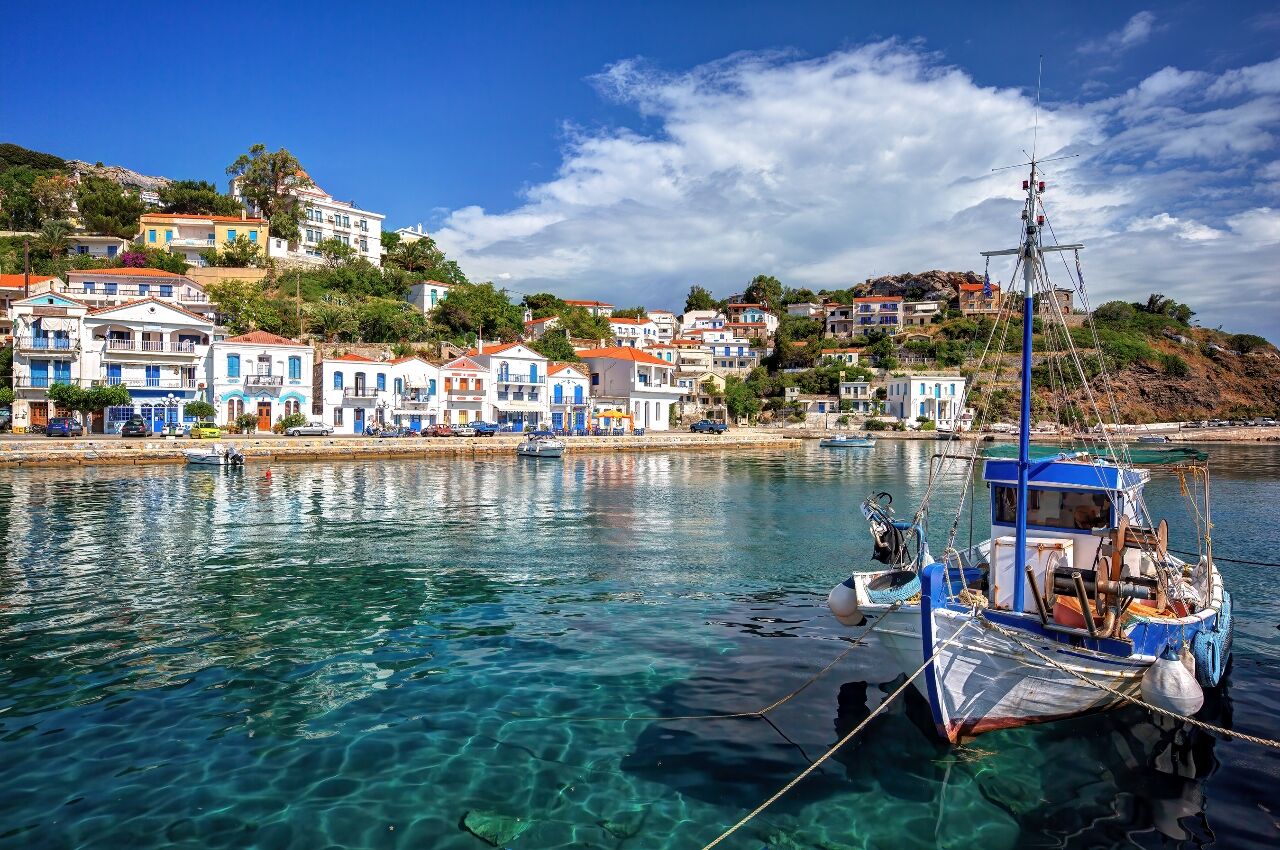
Photo: Lemonakis Antonis/Shutterstock
While Greece has thousands of islands and inlets, Ikaria achieved Blue-Zone status by having an average of one in three residents live to the age of 90, substantially decreased rates of heart disease, and practically zero cases of dementia.
This is attributed to a Mediterranean diet, favoring fruits, vegetables, anti-inflammatory herbal teas, and red wine (in moderation). Intermittent fasting, a practice linked to slower aging, is also common within the population. Locals enjoy a carefree pace of life, with strong social ties in the pleasing climate. Many stay active by exploring the hilly topography and emphasizing leisure through mid-afternoon naps, relaxing along the Aegean coastline, or playing a fun game of dominos with friends.
The easiest way to get to Ikaria is via direct flight from Athens or Thessaloniki, although it is possible to get there by ferry. Direct routes exist from Mykonos, Samos, and other islands, and while there is a scenic route from Athens, it clocks in at a very long 11 hours. Public transportation on Ikaria is available to most of the popular destinations, but consider renting a car if you want to explore the more remote corners of the island.
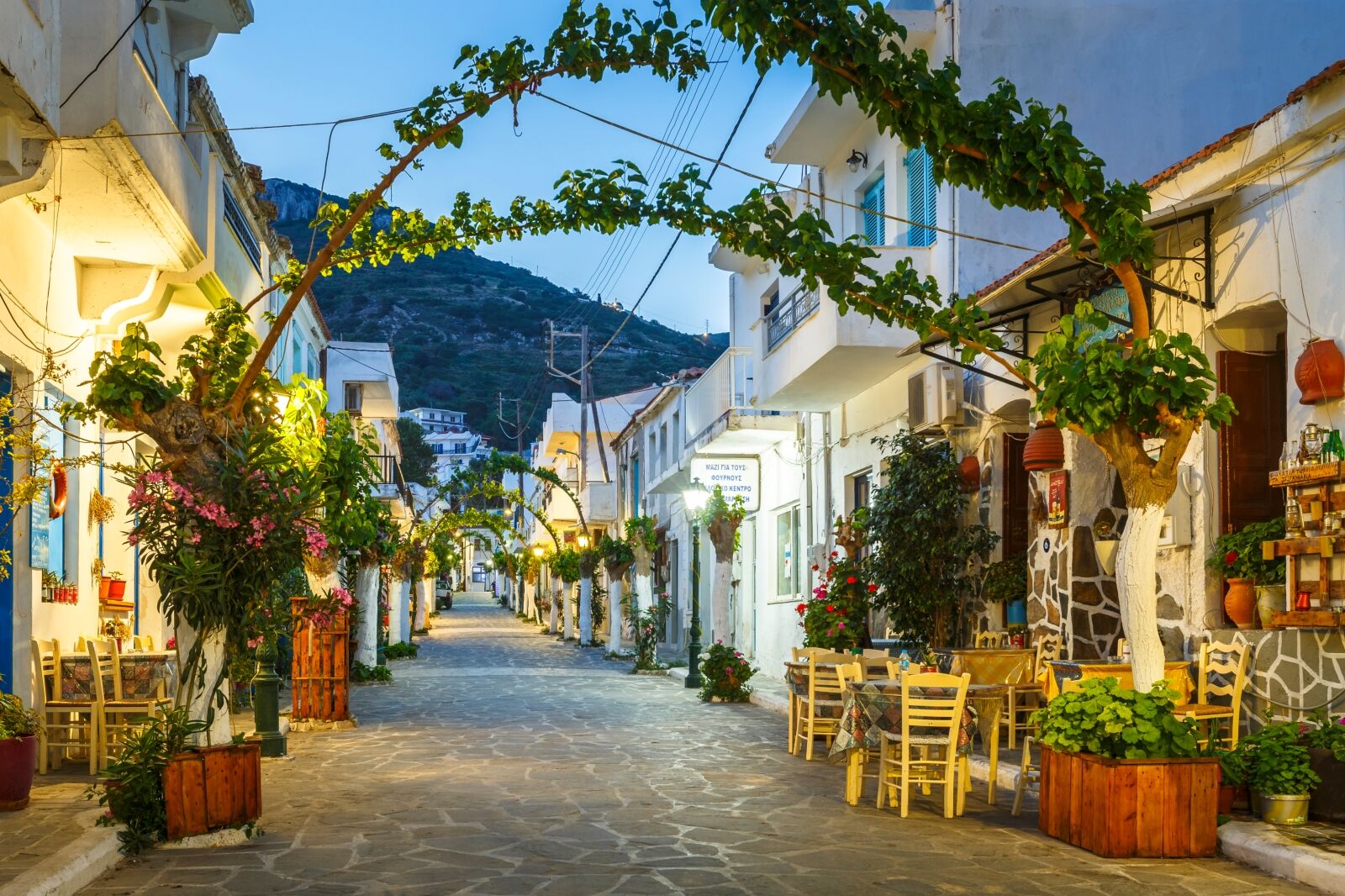
Photo: Milan Gonda/Shutterstock
Ikaria is the least populated of the world’s Blue Zones and offers a more secluded, intimate experience with easy access to nature, regardless of where you’re based.
If you want to base yourself in a cute village, consider Armenistis, on the north shore of the island. The rooms of Toxotis Villas offer lovely views of the Mediterranean and proximity to the town’s shops and art galleries. The town of Nas, west of Armenistis, also has comfortable suites with ocean-facing balconies at Thea’s Inn. Grab a healthy dish of soufiko (vegetable stew) at the inn’s restaurant, which serves up authentic Blue-Zone recipes made with fresh ingredients grown right on the island.
Loma Linda, California
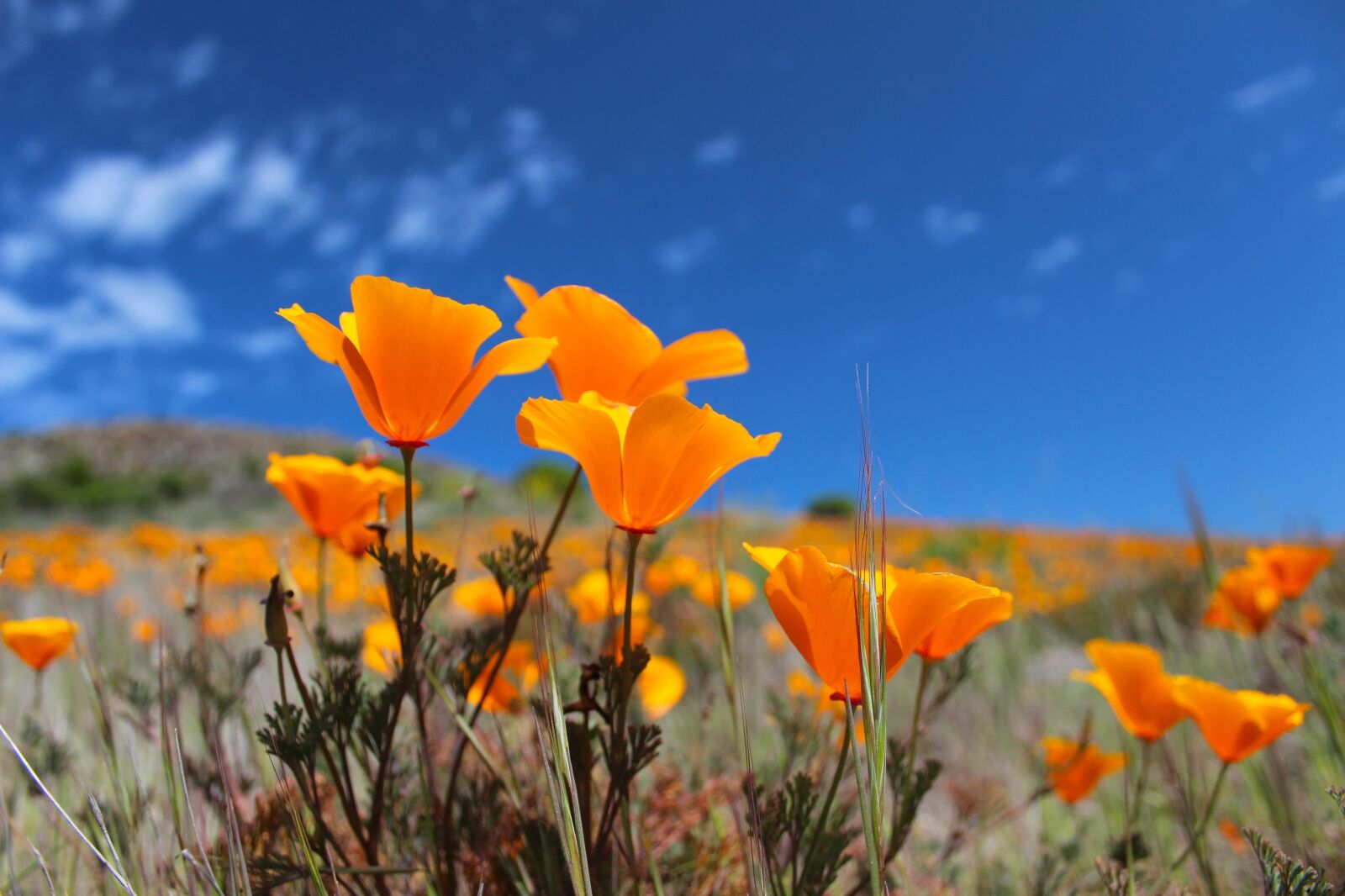
Photo: Sean Lema/Shutterstock
The only Blue Zone in the United States, Loma Linda is in the heart of Southern California. Loma Linda’s longevity is influenced by so many of the residents belonging to the Seventh-day Adventist Church. The church views health as a core tenet of their faith. Vegetarianism is also widespread, with diets comprising light meals with fruits and vegetables. Nuts and tomatoes are popular staples, the latter of which is linked to decreased risk of ovarian and prostate cancers. Church members also do not partake in tobacco, caffeine, or alcohol.
Easily reachable by car, the city has entrances off Interstate 10 roughly 60 miles east of Los Angeles.
When visiting, you can hike the popular lofty trails within the nearby San Bernardino Mountains or stop in Big Bear Lake. About 45 miles northeast of town, Big Bear offers year-round attractions including trekking, fishing, and plenty of skiing come winter. If you get your fill of exploring the peaks and alpine lakes, consider trying some desert stargazing at Joshua Tree National Park or relaxing and enjoying the sunset over the Pacific Ocean — both of which are under an hour’s drive away from Loma Linda.
For food, get a taste of Blue-Zone cuisine at the Loma Linda Market. The market has stalls selling a wide assortment of fresh, locally grown produce and one of Southern California’s largest selections of vegan meat alternatives. Grab a refreshing carrot juice from the market’s Nustart Juicery, and a tasty Blue Zone Burger from Vegan Fresh.

Photo: Booking.com
For lodging, check out the charming Loma Linda Inn in the center of town. If you want something closer to the mountains, consider the Bear Springs Hotel in nearby Highland, a quick 10 miles from the Loma Linda city center. If you’re with a group, consider renting this five-bedroom, private hilltop villa. The property has a large outdoor pool, lush garden, and barbecue facilities.
Okinawa, Japan
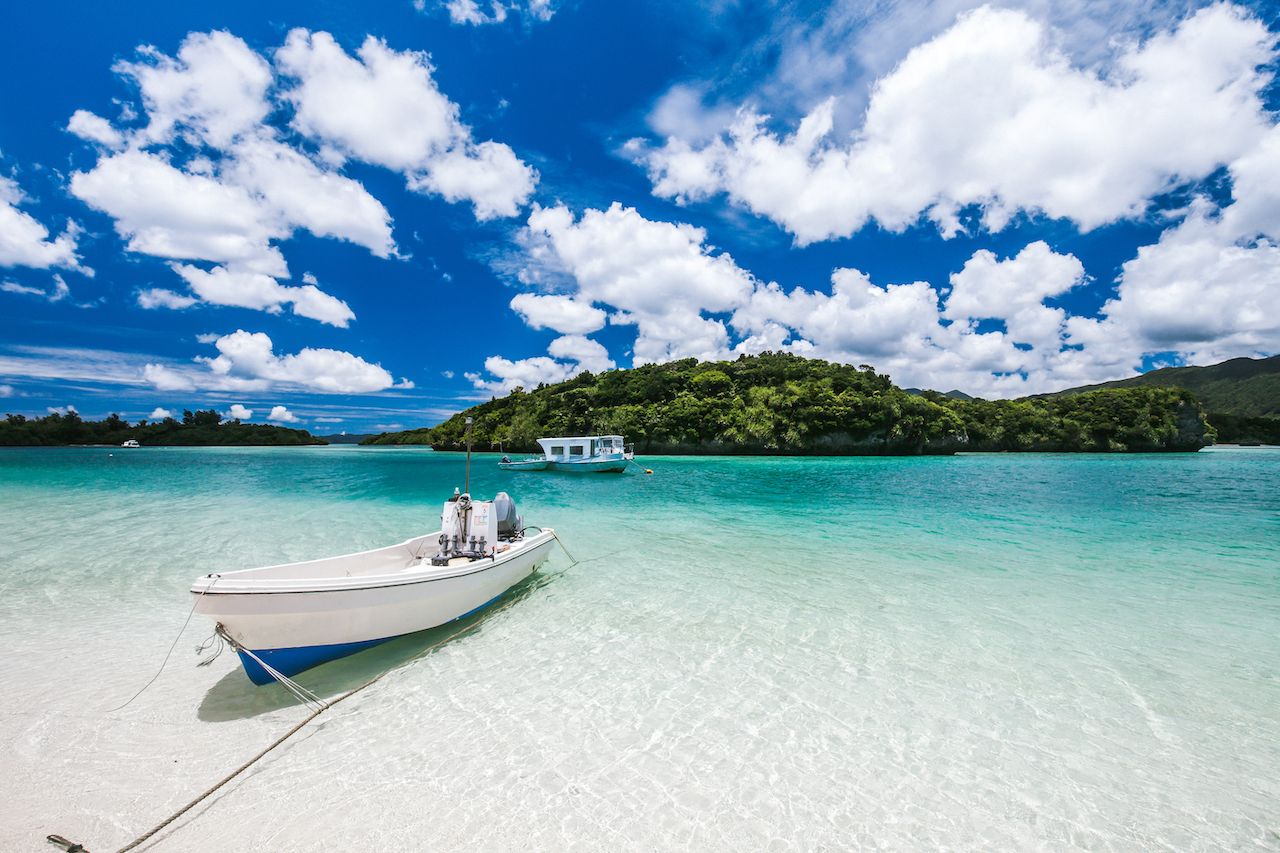
Photo: Shutterstock/Jihun Sim
South of Japan’s four main islands, Okinawa is unique among Blue Zones for having the highest rate of centenarian women in the world.
The Okinawan diet is notable for its simplicity, almost exclusively consisting of sweet potatoes, rice, and soy. Tofu is particularly prominent, especially in dishes like miso soup, and ingredients are often grown in household gardens. Meals are light and taken under the concept of “hara hachi bu.” Roughly translated to “eating until 80 percent full,” this approach is linked to increased health benefits and a more easily managed caloric intake.
Okinawans maintain active lifestyles through frequent walks, gardening, and spending leisure time with friends. The principle of “moai,” or maintaining a lifelong social support system, results in a tightly connected community, and the locals practice purposeful living according to an “ikigai,” a driving force and intention for one’s life.
Getting to Okinawa is possible via direct flights from Tokyo and other cities on the Japanese mainland, although domestic flights tend to be on the expensive side. You may find cheaper routes from other Asian cities like Seoul, Shanghai, and Hong Kong, and trips via ferry are also possible. While they’re more scenic, ferry rides can also be expensive and make for a slower journey.
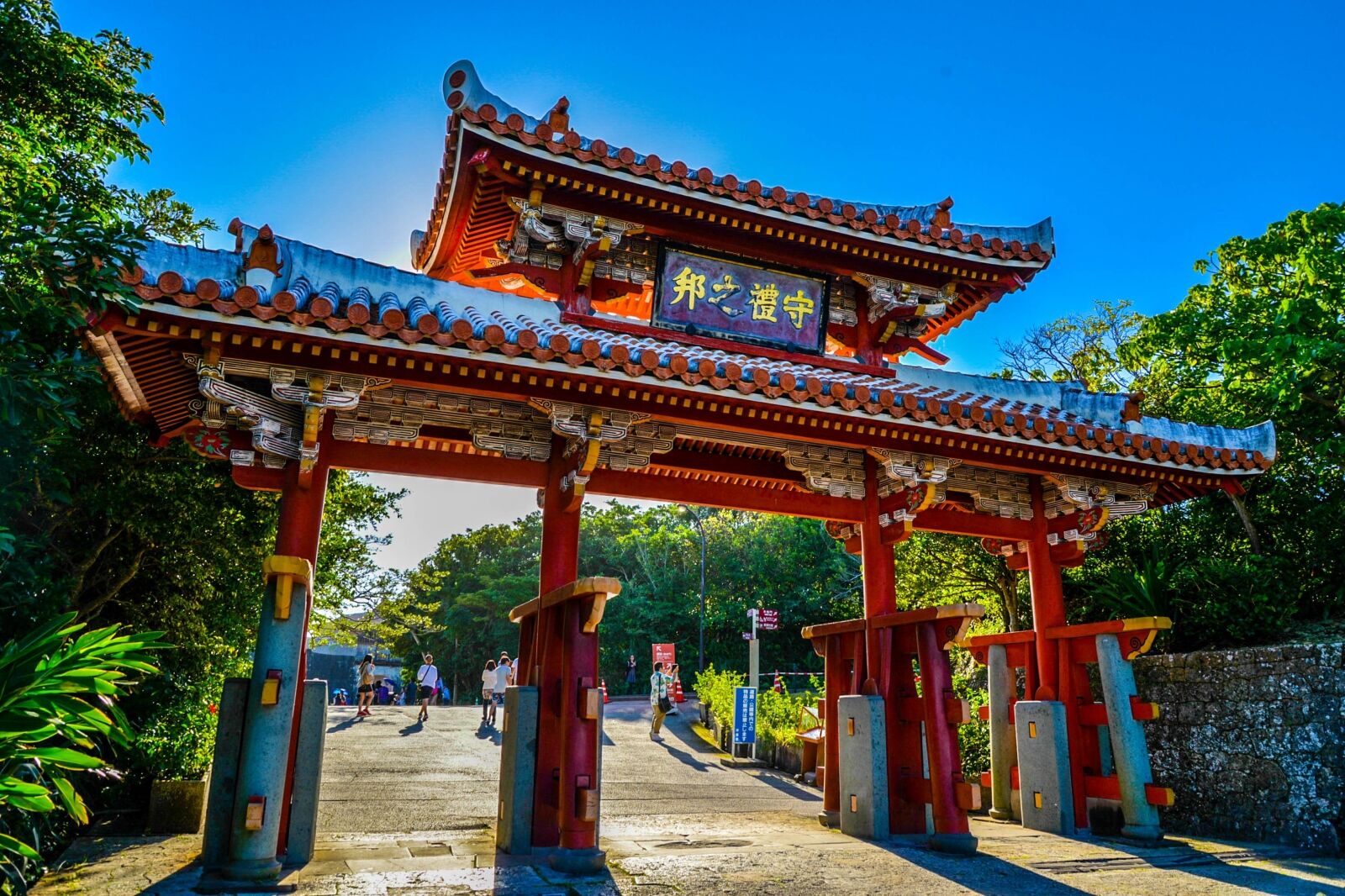
Photo: jakavut patanapanlert/Shutterstock
Central Okinawa offers plenty to do for the history lover. Grab some magi-tacos from Cafe Mermaid or check out the nearby Nakagusuku Castle ruins, one of the island’s several UNESCO World Heritage sites.
The narrow isthmus of central Okinawa also provides terrific opportunities for rooms with stunning ocean views, like the lovely Hyakuna Garan Hotel 30 minutes north of Naha. Its cliff-top villas overlook a cape and offer opportunities to see both the sunrise over the Pacific Ocean and the sunset over the East China Sea.
The nearby Umi no Ryotei Hotel, a ryokan (Japanese-style inn), offers a more authentic cultural experience with tatami-matted rooms and a communal outdoor onsen.
If you base your trip in the southern city of Naha, consider Ryukyu Onsen Senagajima Hotel, another ryokan with a relaxing public onsen. Most guests tend to visit Sakaemachi Arcade, a lively market home to many vendors of handcrafted Japanese souvenirs and an energetic nightlife.
But if you’re looking to be surrounded by nature, consider the sparsely populated northern half of Okinawa. Visit the lovely seaside rock formations at Cape Manzamo, which offer captivating photographic opportunities overlooking the East China Sea. While there, climb to the summit of Mount Yohana, the highest point on the island, and enjoy an incredible view of the surrounding subtropical laurel forests and seaside towns.
We hope you get to enjoy the Blue Zones! Just so you know, Matador may collect a small commission from the links on this page if you decide to book a stay.